At a time when multifamily housing faces numerous obstacles, developers are well on their way to building more than 1,000 such housing units, mostly rental apartments, within less than 8 miles of one another in Middletown, Portland and Cromwell.
None of it came about easily, however, as major projects now moving toward fruition have been in the works for years, sometimes with significant conflict along the way and always with extensive scrutiny and discussion.
Most of the multifamily housing growth comes from three major complexes:
Advertisement
Article continues below this ad
While those three complexes, all of which are receiving tax abatements from the municipalities, account for 1,000 of the coming housing units, redevelopment of buildings on Main Street in Middletown is expected to add another 30 units.
The reasons for the surge in apartment construction are undoubtedly multifaceted. But Bob Dale, the developer of Springside Middletown, succinctly explained one major reason when he said during a recent tour of the construction site, “Connecticut is the state with the least vacancy.”
The burgeoning apartment market is not the only development taking place in the area. At least two of the big apartment complexes, Brainerd Place and Lord Cromwell, will also include commercial space, as will the four smaller redevelopment projects on Middletown’s Main Street.
Advertisement
Article continues below this ad
Other commercial development in the area includes a Big Y supermarket under construction on South Main Street in Middletown and a Texas Roadhouse restaurant and Goldfish Swim School, both under construction in the big shopping plaza anchored by a ShopRite supermarket at 45 Shunpike Road in Cromwell.
An entrepreneur’s plan to convert the abandoned Portland Drive-in site into a complex containing a firing range, archery range, axe throwing lanes, a food court and conference rooms could become real at any time.
Robert Pizzi, president of Central Connecticut Arms LLC, says he put the project out to bid last month and is waiting to see whether the bids show that the COVID-19 spike in construction prices has come down to the point that he is willing to go ahead.
Here’s a rundown of the projects by town:
Advertisement
Article continues below this ad
Middletown
Springside Middletown. Phase 1, consisting of 240 apartments and amenities that include conference rooms for people who work at home and an outdoor pool, is under construction. Bob Dale, the developer, said during the site tour that he hopes to have apartments ready to occupy by about Memorial Day, with completion of Phase 1 by mid-2025.
After that, he said, he hopes to secure financing for the second 246-apartment phase of the project.
Advertisement
Article continues below this ad
Dale said it was too early to know exactly what rents in the complex would be, but he said they would be comparable to other “newer communities in the region,” roughly in the range of $2,000 to $3,000 per month.
The complex will bring a big infusion of population to the outskirts of town. But the developer plans to encourage the tenants to shop locally by giving out gift cards good at more than 200 local businesses, Mayor Ben Florsheim said during the tour. He said the total amount of the cards started at $100,000 but is higher now.
Big Y. Construction is well underway on the new supermarket on South Main Street. The store is expected to bring 50 full-time and 100 part-time jobs to the city, while adding $20 million to the tax rolls, according to a document the developer, Stone Point Properties LLC, submitted to the Planning and Zoning Commission when it was under consideration.
The developer said the new store is in an “underserved corridor,” and several residents who submitted written comments to the commission agreed that the area needs a grocery store.
Advertisement
Article continues below this ad
The developer called the store more “appropriate and attractive” than the telephone company fleet maintenance garage that was on the site previously.
The entrance will be from South Main Street, unlike the maintenance garage, which opened on Highland Avenue, and a traffic light will be installed at the entrance. The developer said the light would enhance traffic and speed control in the area.
418-422 Main St. Dominick DeMartino is the principal of companies redeveloping this building and several others on the east side of Main Street.
Advertisement
Article continues below this ad
The business on the first floor of 418 Main St. is to be called The Wine Bar at Sicily, and is to be operated by Tony Prifitera, who also owns Sicily Coal-Fired Pizza next door at 412 Main St. Prifitera said the space for the wine bar is “about ready” and that it probably will open in February.
On the northern, 422 Main St. side of the building, an ice-cream and cookie shop is planned, also to be run by Prifitera.
The upper floors of the building are to be renovated into 10 market-rate apartments, according to Christine Marques, the city’s economic and community development director.
428 Main St. is another DeMartino project, being done with city and state financial assistance. The developer plans to restore the art deco façade of the former Woolworth building and use the first floor for retail and restaurant space, while creating a rooftop bar overlooking the Connecticut River, according to Marques.
Advertisement
Article continues below this ad
545 Main St. consists of two buildings, a former office building facing Main Street and a former roller-skating rink in the back, according to Marques. It belongs to a company headed by resident Jerome R. Carnegie-Hargreaves, records show.
The plan, also being carried out with city and state financial assistance, is to create eight “workforce residential units” and more than 12,000 square feet of “program and small business space,” according to Marques.
584 Main St. is another DeMartino project, this one involving replacement of the front section of the existing building. The revamped building is to be occupied by a restaurant and 12 apartments, Marques said via email.
Advertisement
Article continues below this ad
Cromwell
Lord Cromwell complex. The town is giving substantial tax abatements to the developers of the new complex planned for 100 Berlin Road, at the intersection of Route 372 and the entrance ramp to the northbound lanes of Interstate 91.
But, in addition to the new development, the town stands to get a cleanup of a blighted former hotel that presents challenges from squatting to mold and PCBs, according to the developers.
Advertisement
Article continues below this ad
The project has necessary local approvals but physical work has yet to start. When the financing for the project is in place and weather permits, the developer, Lexington Partners LLC, plans to start a demolition and site cleanup process that could take a year and cost more than $4 million, according to lawyer Peter J. Alter, representing the developer.
Construction will come next and is expected to take 24 to 28 months, depending on the weather, Alter told the Town Council in October.
When the project is complete, it is expected to include 254 rental apartments, 20 townhouse condominium units and some 30,000 square feet of commercial space, the developer says.
Texas Roadhouse. The new restaurant is under construction on the edge of the parking lot of the ShopRite plaza at 45 Shunpike Road, replacing the Ruby Tuesday restaurant that formerly occupied the site.
Advertisement
Article continues below this ad
"We are on schedule to open our doors at the end of March 2024," Peter Christian, an official of three companies involved in the development, said via email.
Goldfish Swim School is being built in the same plaza, in a space formerly occupied by a Pet Valu store and a vacant space that was next door to it, according to Steve Marszalek, a co-owner of the company that will operate the chain’s Cromwell school.
He said the school is expected to open Jan. 2. It started taking enrollments in October and has reached almost 600, said Lydanis Cruz, the school’s sales and service coordinator. She and Marszalek said the school can accommodate up to 1,800 students.
Advertisement
Article continues below this ad
Aside from the Cromwell school’s sign and construction fencing around the front, little visible change is taking place. But major changes have been happening inside, where construction of a pool started about four months ago, and it was recently filled with water, Marszalek said.
Other changes to the building include changes to the ventilation system, installation of showers, bathrooms, and even a hair drying station, he said.
The school plans to keep the pool’s water temperature at 90 degrees and the air temperature at 92 degrees, he said. That’s part of the school’s approach of making learning to swim a fun and pleasant experience for the children from ages 4 months to 12 years that it teaches.
The school emphasizes learning through play, along with safety, according to its website. Marszalek said the interior will seek to create a bright, colorful family atmosphere.
Advertisement
Article continues below this ad
Portland
Brainerd Place, now under construction, is to include 240 apartments and almost 118,000 square feet of commercial space, according to Dan Bourret, the town’s development planner. The complex, at the intersection of Main and Marlborough streets, also includes three historic homes that will be preserved, he said.
The project received its first approval around 2017 and it has undergone changes over the years, Bourret said. He said the developer, BRT DiMarco PTP LLC, has changed the project from two phases to three and is negotiating a new tax abatement agreement with the selectmen.
Advertisement
Article continues below this ad
Central Connecticut Arms plans a firing range that will include five 100-yard rifle lanes and 15 25-yard pistol lanes on the site of the former drive-in theater, according to Pizzi, the company president.
Asked about the compatibility of the range and the food court also planned for the complex, Pizzi said, “You won’t hear a thing.”
The complex is also to include five archery lanes separate from the firing range, he said, and will offer axe throwing and several large conference rooms available to rent for events.
The complex will also include a three-dimensional simulator for such things as self-defense training, he added.

 860.777.1027
860.777.1027




 Service Areas
Service Areas























